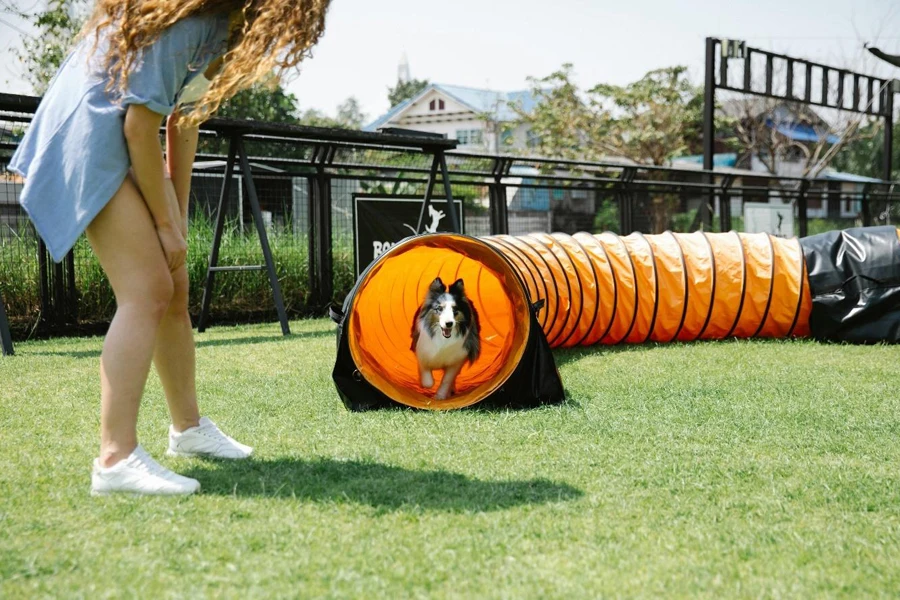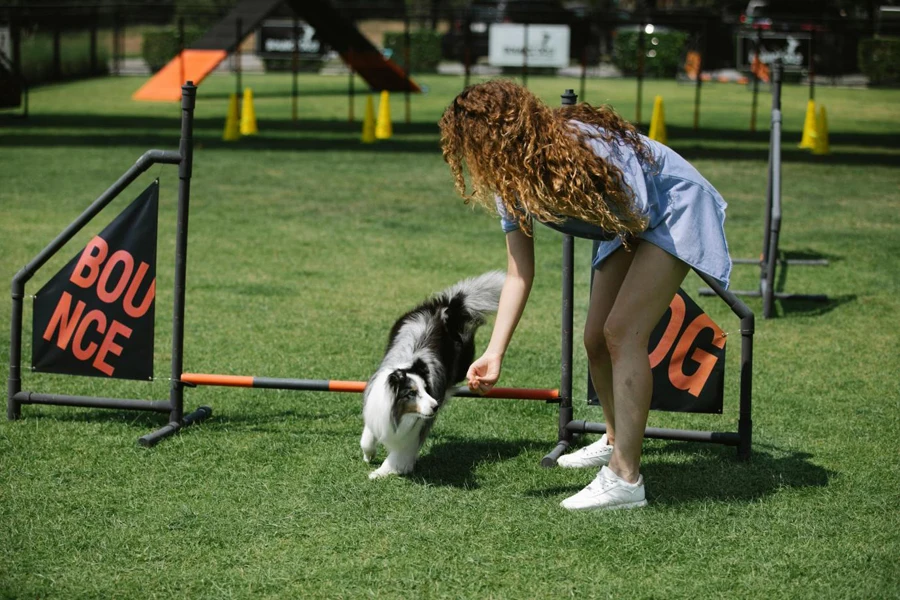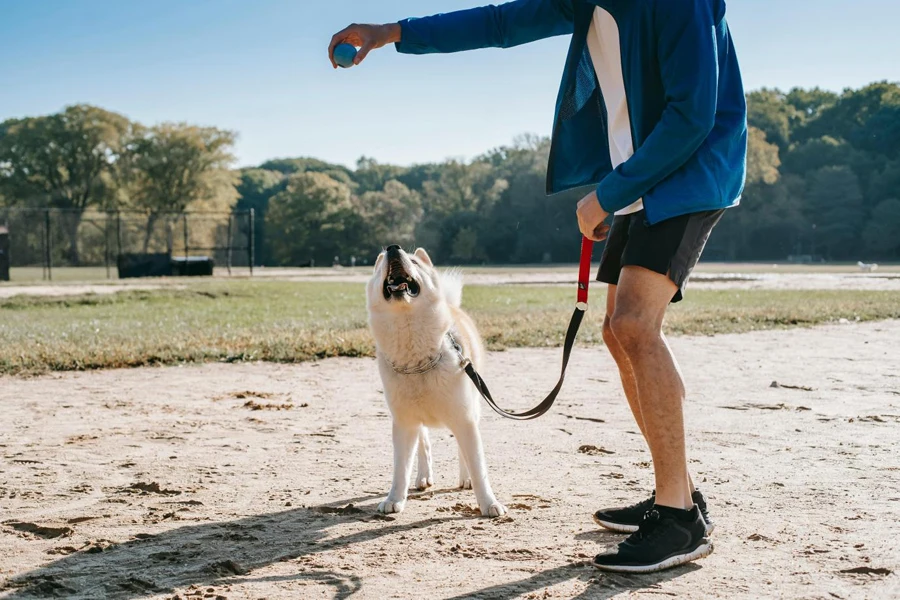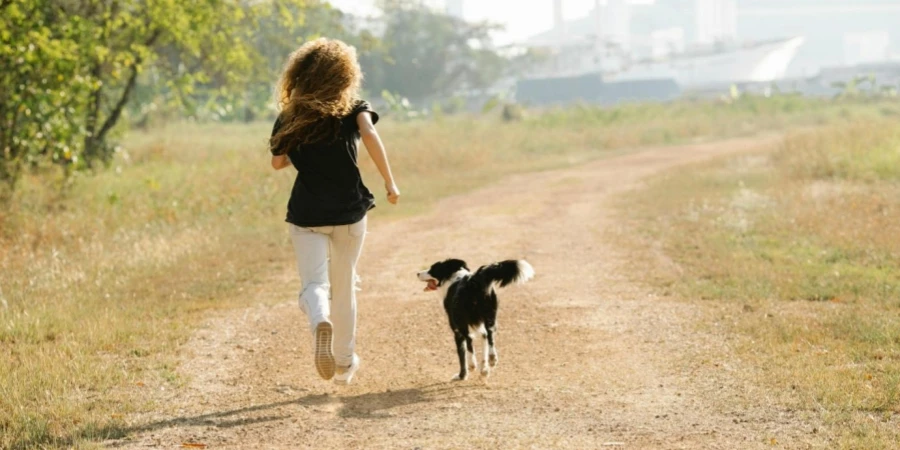Table of Contents
● Introduction
● Market overview
● List of essential pet training supplies
● Conclusion
Introduction

Pet training tools have become essential in strengthening the connection between owners and their furry friends. These items help make training more successful and fun using technology and designs. The demand for training tools highlights the growing emphasis on positive reinforcement and tailored solutions. With products ranging from toys to environmentally friendly materials, the pet training industry is adapting to cater to the various needs of both pets and their owners. Investment in training equipment enhances the behavior of pets and strengthens the bond between animals and their caretakers.
Market overview

Market scale and growth
The market for pet training supplies reached $11 billion in 2023 and is expected to reach $16 billion by 2030, with an annual growth rate of 6.8%. This significant growth is attributed to the growing number of pet owners worldwide and the increasing favor for positive reinforcement training methods among them. The expansion of the market is also affected by the technological improvements in pet training products, which make them more efficient and enjoyable to use.
Market segmentation
The market is divided based on the types of products and regions worldwide. The main products are training clickers, training treats, interactive toys, agility equipment, collars, leashes, and harnesses among many others. They help with obedience and behavior management for pets. Regionally, North America is leading the market due to its high pet ownership rates and well-developed pet care facilities compared to other regions, such as Europe, Asia Pacific, Africa, and the Middle East.
Market trends
Blending technology into products results in innovative toys and tools for training purposes, like automatic feeders and AI-driven companions, that improve the effectiveness of training sessions and interaction with pets. The focus is shifting towards providing personalized solutions that cater to the unique needs of different breeds and the age and temperament of pets. There is also an increasing interest in practices among pet owners who prefer eco-friendly materials and ethically sourced products for their furry companions.
List of essential pet training supplies

Clickers
Clickers make a clicking noise to acknowledge positive behavior cues during training sessions. These clickers come in traditional types and digital versions, available as apps or ring-shaped gadgets. Usually made of ABS plastic material for durability, even with regular use, clickers are designed with ergonomic features for easy handling. They may come with volume controls to adjust to various training settings. By offering a prompt indication of correct behavior, these tools help reinforce positive actions effectively by providing immediate feedback in training scenarios.
Treat pouches
During training sessions, having treat pouches is crucial for access to rewards. These pouches are usually made of water-resistant nylon or polyester. They can be attached to belts or secured with adjustable straps for durability and easy cleaning. They often come with compartments to hold different treats and small training tools. Magnetic or drawstring closures allow access without spills. Additional features increase their usefulness, like waste bag dispensers and extra pockets.
Collars, leashes & harnesses
Items like collars and leashes are commonly used to control pets during walks or training sessions. Harnesses can also be a tool for ensuring the safety and security of your furry companions. Using collars and harnesses is important when training and managing pets to control them effectively and communicate with them clearly. Regular head collars (Haltis) are usually crafted from durable nylon webbing or leather. They come with metal buckles and D-rings for secure fastening. Harnesses play a role in distributing pressure evenly across a dog’s body to prevent strain around the neck area. Many harness designs feature cushioned chest and back panels for comfort and reflective stitching for an enhanced visibility during walks or outings. Moreover, they often have adjustment points to ensure a customized and secure fit. Leads made of nylon or leather vary from the standard six-foot to longer training leashes, providing different degrees of control and flexibility.
Training toys
Toys used for training are essential in maintaining the interest and excitement of pets during training sessions. Tug toys for playtime and fetching are typically crafted from strong materials, like rubber or nylon, that can endure rough play and chewing. Puzzle feeders are designed with compartments or mechanisms that encourage pets to work out challenges to receive treats. This helps improve their skills and development. For playing fetch, certain toys feature streamlined shapes to allow for throws and may come equipped with squeakers or different textures to hold the pet’s attention.
Long lines

Long leads play a role in outdoor training by offering ample space for movement without compromising control over the pet’s actions and behaviors. This equipment comes in lengths ranging from 15 to 50 feet. It is crafted from robust materials such as polypropylene or biothane that can withstand weather conditions and daily wear and tear. Characterized by swivel clips that prevent entanglement and reinforced stitching for durability, long leads are perfect for teaching recall commands to dogs and enabling them to explore while still being responsive to directives freely.
Waste bags & dispensers
Having waste bags and dispensers is important to keep things clean and tidy. Biodegradable waste bags made from materials like cornstarch are eco-friendly as they decompose naturally without harming the environment. Dispensers are designed to be compact. It can easily attach to leashes or treat pouches for quick access to bags whenever needed. Certain dispensers include LED lights for night walks or scent lock technology to trap odors effectively. They add convenience and help maintain pet owners’ hygiene.
Other useful tools
Pet training tools like agility gear and interactive toys are evolving to support animals’ overall health and happiness with enhanced features tailored to their physical and mental needs. Agility gear like tunnels and weave poles enhance coordination and obedience while also serving as a source of fun challenges for pets. Interactive toys that dispense treats or kibble promote problem-solving skills and offer stimulation to alleviate boredom and anxiety in pets through interactive play sessions.
Conclusion

Choosing the pet training gear is important to ensure training is effective and fun for you and your furry friend! These supplies can improve the training process. Deepen the connection between pets and their owners. With new trends and products popping up in the training market, it’s essential to stay updated so that you and your pet can have a successful and enjoyable training experience.




